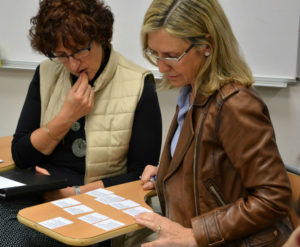2 weeks
Course Length
Mon to Fri
Lesson Days
15 a week
Lessons
English
Language
B1
Minimum Level
Overview
Language Development and Teaching Skills Course is suitable for teachers who want to build their own expertise and use of English for classroom teaching and life outside the classroom.
Through the training, you will also gain ideas that you can introduce to your classroom. The course focuses on improving language skills through revision of grammar, pronunciation and reading.
Some of the teaching skills that you gain will help you to evaluate, select and adapt published and authentic materials for classroom use, to use different techniques for correcting oral and written learner errors.
Completing this course will help you:
- To develop understanding of English language for teaching objectives
- To enhance accuracy of classroom language
- To develop an awareness of classroom principles and methods
- To look at your teaching context and apply the learnt knowledge in your lessons
- To practise using classroom language and obtain feedback.
Who is the course for?
For teachers who want to develop an awareness of the English language for teaching purposes and improve the accuracy of classroom language through lessons focused on enhancing language and teaching skills.
Course Sample programme
| Week 1 | Course Content |
| Monday | Review and clarify grammatical areas |
| Tuesday | Extend lexical range, e.g. phrasal verbs and idiomatic language |
| Wednesday | Improve pronunciation at word and sentence level |
| Thursday | Develop reading and listening skills through the use of contemporary materials selected from TV, films, magazines/newspapers, songs and the internet |
| Friday | Classroom language for setting up and managing classroom activities |
| Week 2 | |
| Monday | Approaches and techniques for introducing and practising a new language |
| Tuesday | Techniques for correcting oral and written learner errors |
| Wednesday | Adapting teaching approaches and techniques to learners with specific needs and to different ages, e.g. business, teenagers |
| Thursday | Using different media |
| Friday | Peer-to-Peer Learning |
*Please note that the course content may be subject to change due to latest methodology trends updates.
1 lesson=45mins
Share This Class:
What people are saying



More Courses
You might also be interested in these courses

Technology for Language Teachers
Technology for Language teachers is aimed at teachers who want to use more technology in the classroom to enhance the learning experience of their students…

Teaching for Exam Classes
Teaching for Exam Classes is for English teachers who are preparing teenage or adult students for exams. Preparing to teach Cambridge or IELTS exam class. London…

Pronunciation and Performance with an expert “Adrian Underhill”
Pronunciation and Performance with an expert is a course led by a world-renowned ELT Consultant and Trainer. Adrian Underhill is an author and the series…

Practical Teacher
Practical Teacher is suitable for teachers who want a practical programme that covers developing resources, practical ideas and methods to liven up classrooms…

Life in Britain
Life in Britain is for teachers interested in finding out about modern British culture. The topics will be taught using a communicative methodology…

Current Trends Teaching Methodology
Current trends will develop an awareness and understanding of current ELT principles and practice and your ability to critically examine current…
Methodologies

Total Physical Response
Total Physical Response is considered to be an excellent way of learning vocabulary. Moreover, since it is based on commands, the students can easily learn the meaning of the words in the target language.

The Structural Approach
This method is based on the opinion that it is imperative to understand the structures of the language. Understanding the complexities of the structures of the sentences in a language is more important than learning the vocabulary of the language.

The Direct Method
This method primarily focuses on the development of oral skills. One of the most important characteristic feature of this method is that visual materials and real-life objects are used. Moreover, such an oral training helps in reading and writing. There is no translation involved in this method.
